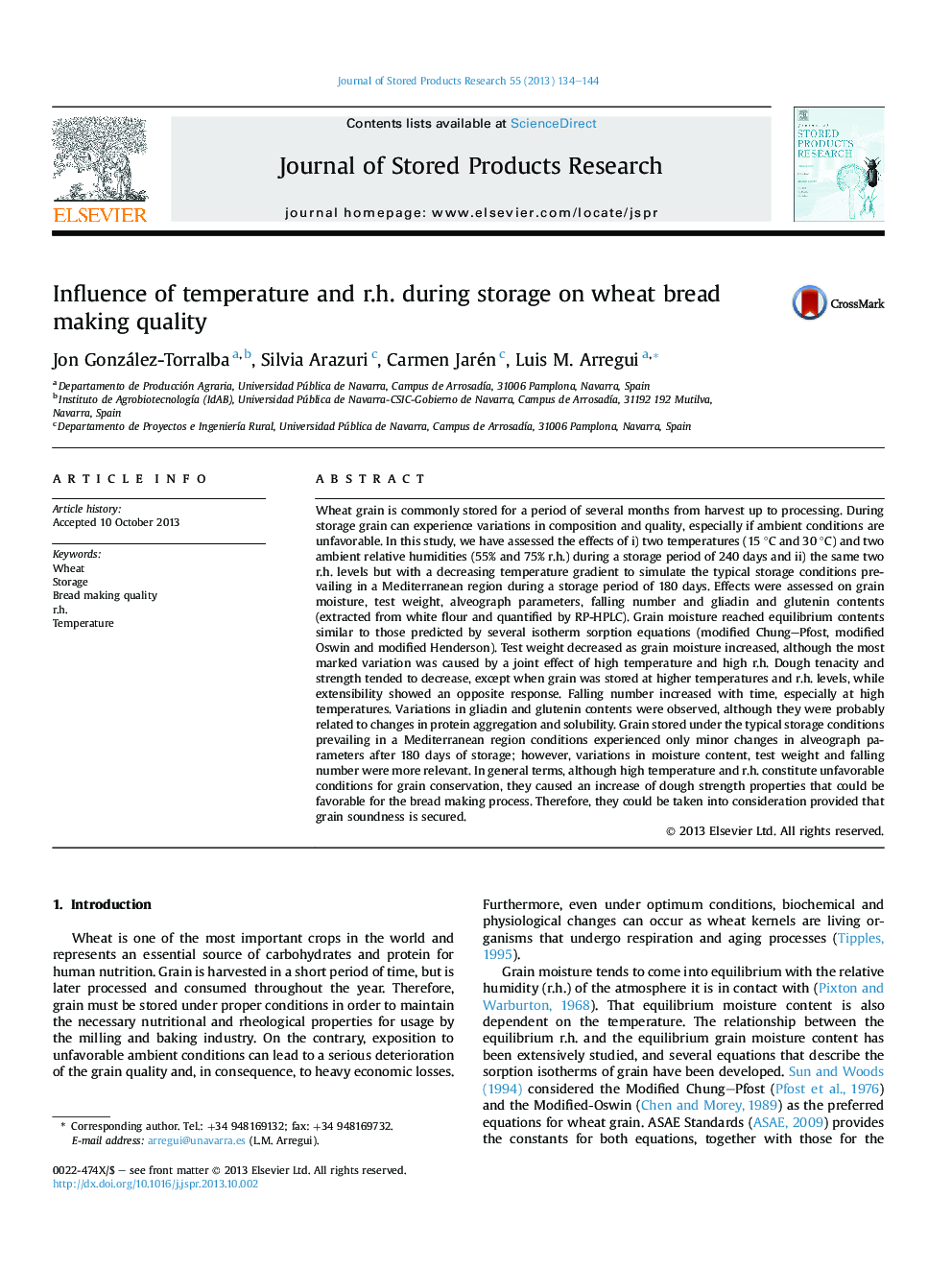| Article ID | Journal | Published Year | Pages | File Type |
|---|---|---|---|---|
| 4517152 | Journal of Stored Products Research | 2013 | 11 Pages |
•Quality of grain stored at various temperature and relative humidities was studied.•Prevailing storage conditions in a Mediterranean region were evaluated.•High temperature and relative humidity enhanced dough tenacity and strength.•High temperature and relative humidity decreased dough extensibility.•Minor changes in alveogram were obtained in Mediterranean storage conditions.
Wheat grain is commonly stored for a period of several months from harvest up to processing. During storage grain can experience variations in composition and quality, especially if ambient conditions are unfavorable. In this study, we have assessed the effects of i) two temperatures (15 °C and 30 °C) and two ambient relative humidities (55% and 75% r.h.) during a storage period of 240 days and ii) the same two r.h. levels but with a decreasing temperature gradient to simulate the typical storage conditions prevailing in a Mediterranean region during a storage period of 180 days. Effects were assessed on grain moisture, test weight, alveograph parameters, falling number and gliadin and glutenin contents (extracted from white flour and quantified by RP-HPLC). Grain moisture reached equilibrium contents similar to those predicted by several isotherm sorption equations (modified Chung–Pfost, modified Oswin and modified Henderson). Test weight decreased as grain moisture increased, although the most marked variation was caused by a joint effect of high temperature and high r.h. Dough tenacity and strength tended to decrease, except when grain was stored at higher temperatures and r.h. levels, while extensibility showed an opposite response. Falling number increased with time, especially at high temperatures. Variations in gliadin and glutenin contents were observed, although they were probably related to changes in protein aggregation and solubility. Grain stored under the typical storage conditions prevailing in a Mediterranean region conditions experienced only minor changes in alveograph parameters after 180 days of storage; however, variations in moisture content, test weight and falling number were more relevant. In general terms, although high temperature and r.h. constitute unfavorable conditions for grain conservation, they caused an increase of dough strength properties that could be favorable for the bread making process. Therefore, they could be taken into consideration provided that grain soundness is secured.
